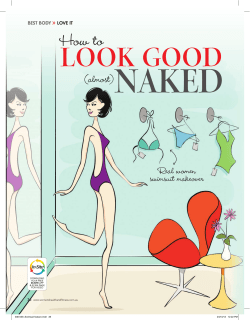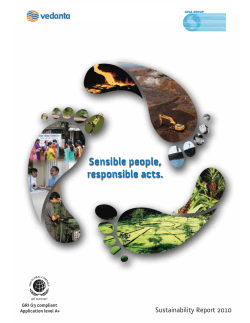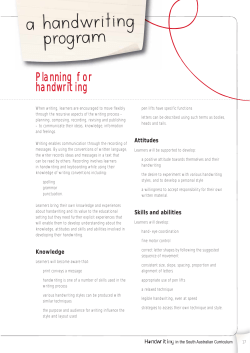
, Usage, and Mechanics Grammar 2 ISBN 978-0-7367-9276-9
s c i n a h c e M d n a , e g a s U , r a m ram G 2 ISBN 978-0-7367-9276-9 90000 1-800-421-3018 www.zaner-bloser.com SFI-00712 9 780736 792769 E B F 3 PWFS D T J % E O B 4FOUFODFT5IBU"TL Lesson 7 Gold was found in California in 1848. _____ Did people go there to try to get rich? _____ 1VUBDIFDLCZUIFTFOUFODFUIBUBTLTBRVFTUJPO "OBTLJOHTFOUFODFBTLTBRVFTUJPO*UFOETXJUIBRVFTUJPONBSL See Handbook Sections 5 and 8 1BSU 3FBEFBDITFOUFODF*GJUJTBOBTLJOHTFOUFODFBEEBRVFTUJPONBSLUPJU A FOXSJUF"JOUIFCMBOL 1. Sarah Royce left Iowa in April of 1849 2. Who went with her 3. She traveled with her husband and her child 4. Were they on the trail for six months 5. Did mules carry them over the mountains 6. They reached the mining camps safely in October -FTTPO 1BSU 3FBEFBDIUFMMJOHTFOUFODFA FODPNQMFUFUIFBTLJOHTFOUFODFUIBU GPMMPXTJU#FTVSFUPFOEUIFBTLJOHTFOUFODFXJUIBRVFTUJPONBSL 7. A diary is a good place to write about a trip. Is a diary a good place to 8. Sarah Royce described her adventures. Did Sarah Royce describe 9. We can read her words about the trip now. Can we read her words 1BSU 8SJUFBOBTLJOHTFOUFODFBCPVUBGBNPVTKPVSOFZ3FNFNCFSUPCFHJO ZPVSBTLJOHTFOUFODFXJUIBDBQJUBMMFUUFS&OEZPVSBTLJOHTFOUFODFXJUI BRVFTUJPONBSL /BNF E B F 3 DPWFS T J % BOE /PVOT Lesson 11 A firefighter firefighterfaces faces danger often. 8IJDIXPSEJOCPMEUZQFOBNFTBQFSTPOBQMBDFPSUIJOH Which word in bold type names a person, a place, or thing? $JSDMFUIBUXPSE "OPVOJTBXPSEUIBUOBNFTBQFSTPOBQMBDFPSBUIJOH See Handbook Section 12 1BSU $JSDMFFBDIVOEFSMJOFEXPSEUIBUJTBOPVO 1. An earthquake struck our city! 2. Firefighters rushed to burning homes. 3. These heroes searched fallen buildings. 4. One firefighter heard soft cries. 5. A girl was trapped inside a fallen house. 6. That brave worker freed the girl! Firefighters help in all kinds of emergencies. -FTTPO 1BSU $IPPTFBOPVOGSPNUIFCPYUPDPNQMFUFFBDITFOUFODF ladders 7. My friend is a truck firefighter . 8. She drives a big red . 9. Her truck carries tall . 1BSU 8SJUFBTFOUFODFBCPVUBmSFmHIUFS3FNFNCFSUPCFHJOZPVSTFOUFODF XJUIBDBQJUBMMFUUFS&OEJUXJUIBQFSJPEPSBOFYDMBNBUJPOQPJOU /BNF E B F 3 DPWFS T J % BOE .ZTFMGBOE:PVSTFMG Lesson 22 a. I made myself a mask. Will you make yourself a mask, too? b. I made me a mask. Will you make youself a mask, too? -PPLBUUIFXPSETJOCPMEUZQFJOFBDIQBJSPGTFOUFODFT $JSDMFUIFMFUUFSJOGSPOUPGUIFTFOUFODFTUIBUBSFXSJUUFO DPSSFDUMZ .ZTFMGBOEZPVSTFMGBSFSFFYJWFQSPOPVOT"SeflFYJWFQSPOPVO SFGFSTCBDLUPUIFTVCKFDUPGBTFOUFODF See Handbook Section 14 1BSU 3FBEFBDITFOUFODF$JSDMFUIFXPSEJO UIBUJTUIFDPSSFDUGPSNPGB SFnFYJWFQSPOPVO 1. You should write (youself/yourself) a note. 2. You need to remind (yourself/you) about the costume party. 3. I am making (me/myself) an owl costume. 4. I made an owl mask all by (myself/meself). 5. Have you ever made (yourself/youself ) a mask? 6. Now I am making (myself/me) some owl wings! This boy is making a costume to wear in a play about forest creatures. -FTTPO 1BSU 8SJUFNZTFMGPSZPVSTFMGJOUIFCMBOLUPDPNQMFUFFBDITFOUFODF 7. You have made a wonderful rabbit costume! 8. You should look at in the mirror. 9. I wish I had made a rabbit costume! 1BSU 8SJUFBTFOUFODFBCPVUBDPTUVNFZPVXPVMEMJLFUPNBLFGPSZPVSTFMG 6TFDPSSFDUDBQJUBMJ[BUJPOBOEQVODUVBUJPO /BNF E B F 3 PWFS D T J % E O B 'PSNTPGUIF7FSC#F Lesson 33 Hamsters are small rodents. This hamster is a pet. $JSDMFUIFWFSCJOCPMEUZQFUIBUJTVTFEXJUIBTJOHVMBS Circle the verb in bold type that is used with a singular TVCKFDU%SBXBMJOFVOEFSUIFWFSCJOCPMEUZQFUIBUJT VTFEXJUIBQMVSBMTVCKFDU "MJOLJOHWFSCDPOOFDUTUIFTVCKFDUPGBTFOUFODFUPUIFXPSET UIBUUFMMBCPVUJU-JOLJOHWFSCTJODMVEFUIFXPSETJTBSFXBT BOEXFSF6TFJTPSXBTXJUIBTJOHVMBSTVCKFDU6TFBSFPSXFSF XJUIBQMVSBMTVCKFDU See Handbook Section 15 1BSU 'JOEUIFVOEFSMJOFETJNQMFTVCKFDUJOFBDITFOUFODF$JSDMF4JGUIFTVCKFDU JTTJOHVMBS$JSDMF1JGUIFTVCKFDUJTQMVSBM%SBXBMJOFVOEFSUIFWFSC GPSNJO UIBUBHSFFTXJUIUIFTVCKFDU 1. Hamsters (is/are) rodents. S P 2. My first pet (was/were) a hamster. S P 3. That hamsterÕs name (was/were) Cheeky. S P 4. Its cheeks (was/were) always full of food. S P 5. The golden hamster (is/are) my favorite type. S P 6. Golden hamsters (is/are) small and furry. S P Golden hamsters grow to be about seven inches long. They have very short tails. -FTTPO 1BSU 3FBEFBDITFOUFODFBOEUIFWFSCGPSNTJO 8SJUFUIFDPSSFDUGPSN JOUIFCMBOL 7. Hamsters 8. My hamsterÕs home 9. Fruits, seeds, and meat busy at night. (is/are) a cage. (was/were) its favorite foods. (was/were) 1BSU 8SJUFBTFOUFODFBCPVUBIBNTUFS#FTVSFUPCFHJOUIFTFOUFODFXJUIB DBQJUBMMFUUFS /BNF E B F 3 DPWFS T J % BOE 1FSJPETBOE2VFTUJPO.BSLT Lesson 42 What is a canyon? A canyon is a valley with steep sides. %SBXPOFMJOFVOEFSUIFTFOUFODFUIBUUFMMTTPNFUIJOH $JSDMFJUTFOEQVODUVBUJPONBSL%SBXUXPMJOFTVOEFSUIF TFOUFODFUIBUBTLTTPNFUIJOH%SBXBCPYBSPVOEJUTFOE QVODUVBUJPONBSL 6TFBQFSJPEBUUIFFOEPGBUFMMJOHTFOUFODFBTUBUFNFOU 6TFB RVFTUJPONBSLBUUIFFOEPGBOBTLJOHTFOUFODFBRVFTUJPO See Handbook Section 5 1BSU 3FBEFBDITFOUFODF8SJUFUIFDPSSFDUFOEQVODUVBUJPONBSLGPS FBDITFOUFODF 1. The Grand Canyon is a famous landform__ 2. Is it located in Arizona__ 3. Does it have high, steep walls__ 4. The walls have many layers of colorful rock__ 5. How long is the Grand Canyon__ 6. It is more than 275 miles long__ The Grand Canyon is in northern Arizona. It is about one mile deep. -FTTPO 1BSU 3FXSJUFFBDIUFMMJOHTFOUFODFBTBOBTLJOHTFOUFODF#FTVSFUPVTFUIF DPSSFDUQVODUVBUJPONBSLJOZPVSOFXTFOUFODF 7. Mac visited Grand Canyon National Park. 8. His aunt is a ranger. 9. They hiked on Bright Angel Trail. 1BSU 8SJUFBRVFTUJPOBCPVUBDBOZPO#FTVSFUPVTFUIFDPSSFDUFOE QVODUVBUJPONBSL /BNF 1SPPGSFBEJOH Practice 1SBDUJDF 3FBEUIJTSFQPSUBCPVUBTQFDJBMMBOEBSFB'JOEUIFNJTUBLFT6TFUIFQSPPG SFBEJOHNBSLTCFMPXUPTIPXIPXFBDINJTUBLFTIPVMECFãYFE Proofreading Marks Mark Means Example UBLFBXBZ BEE The road road is steep. is The road steep. NBLFJOUPBDBQJUBMMFUUFS UIFSPBEJTTUFFQ NBLFJOUPBMPXFSDBTFMFUUFS The Road is steep. BEEBQFSJPE The road is steep , BEEBDPNNB The road is steep, rough, and rocky. “ BEEBRVPUBUJPONBSL She said, The road is steep.” ãYTQFMMJOH The roade is steep. “ A Great Swamp in Georgia A swamp is an area of soggy land One of the largest swampy areas in North america is the Okefenokee Swamp. These wetlands are mostly in georgia. A great variety of birdses live here. Frogs snakes, and alligators are also common. Lawmakers made this area the Okefenokee National Wildlife Refuge in 1937. This meant that people could not build roads railroads farms or cities here. I want to write a book called beauty in the swamp. I told my dad. He asked, Do you really think Alligators are beautiful? The alligators are part of a beautiful world, I answered. My father smiled when I said that. I feel the same way about snakes frogs and turtles. TheyÕre all part of a wild and beautiful world. 1SPPGSFBEJOH $IFDLMJTU 6TFUIFMJTUCFMPXUPIFMQZPVmOEBOEmYNJTUBLFTJOZPVSXSJUJOHt FO VTFUIFRVFTUJPOTUPDIFDLZPVSXPSL.BLFBDIFDLNBSL JOFBDI CPYBGUFSZPVIBWFDIFDLFEUIBUJUFN 1SPPGSFBEJOH$IFDLMJTUGPS6OJU Does each sentence begin with a capital letter and end with the right mark? Do all proper names and important words in a book title begin with a capital letter? Are there quotation marks around each speakerÕs words? Have I written contractions correctly? "MTP3FNFNCFSy Do commas separate each item in a series? Do all abbreviated titles of respect begin with a capital letter and end with a period? Have I spelled each word correctly? :PVS0XO-JTU Use this space to write your own list of things to check in your writing. /BNF 6OJU 3FWJFX Sentences 3FXSJUFFBDITFOUFODFDPSSFDUMZ 1. i see a mountain 2. how high is it 3. it is over a mile high! 4. will you hike to the top Proper Nouns and Book Titles $JSDMFFBDIMFUUFSUIBUTIPVMECFDBQJUBMJ[FE6OEFSMJOFFBDICPPLUJUMF 5. This book tells about hikers on Mount washington. 6. That is the tallest peak in new england. 7. The title of the book is fighting the wind. 8. mount washington may be the windiest place in the united states. 6OJU3FWJFX Quotation Marks "EERVPUBUJPONBSLTBSPVOEUIFTQFBLFSTFYBDUXPSET 9. Marina asked, Where is the Shenandoah Valley? 10. It is in northern Virginia, answered Roberto. Abbreviations $JSDMFUIFUJUMFPGSFTQFDUJOFBDITFOUFODF8SJUFFBDIDPSSFDUMZPOUIFMJOF 11. We are looking for ms avila. 12. dr thompson sent us to see her. Contractions $JSDMFUIFXPSEJO UIBUCFTUDPNQMFUFTFBDITFOUFODF 13. That hill (isnt/isnÕt) a mesa. 14. Those valleys (arentÕ/arenÕt) canyons. 15. (WeÕre/WerÕe) crossing the plains now. 16. (TheyÕre/Theyre) flat and level. Commas in a Series "EEDPNNBTXIFSFUIFZBSFOFFEFE 17. This park has canyons mesas, and sand dunes. 18. People walk run and bicycle on trails. 19. The coastal area is cold foggy and windy. 20. Hawaii has swamps volcanoes and sand dunes! /BNF 4DIPPM)PNF$POOFDUJPO *O6OJUPG(6.TUVEFOUTBSFMFBSOJOHXIJDIMFUUFSTUPDBQJUBMJ[FBOEIPXUP VTFQVODUVBUJPONBSLTt FBDUJWJUJFTPOUIFTFQBHFTHJWFFYUSBQSBDUJDFXJUITPNF PGUIFDPODFQUTJOUIFVOJU:PVDBOIFMQZPVSDIJMEVTFUIFJOGPSNBUJPOIFPSTIFJT MFBSOJOHCZDIPPTJOHPOFPSNPSFBDUJWJUJFTUPDPNQMFUFXJUIZPVSDIJMEBUIPNF 8SJUF5IBU%PXO2VFTUJPO.BSLT&YDMBNBUJPO1PJOUT2VPUBUJPO.BSLT 8BUDIBGBWPSJUF57QSPHSBNPSNPWJFXJUIZPVSDIJME8IFOBDIBSBDUFSBTLTB RVFTUJPOXPSLXJUIZPVSDIJMEUPXSJUFJUJOBDPNQMFUFTFOUFODF(VJEFZPVSDIJME UPVTFBRVFTUJPONBSLBUUIFFOEPGUIFTQFBLFSTRVFTUJPOBOEUPQMBDFRVPUBUJPO NBSLTBUUIFCFHJOOJOHBOEFOEPGUIPTFXPSET &YBNQMFi8IFSFJTPVSTQBDFTIJQ wBTLFE.JB 'PMMPXUIFTBNFQSPDFEVSFXJUIZPVSDIJMEUPJEFOUJGZBOEXSJUFBOFYDMBNBUJPO 'BNJMZ%JSFDUPSZ1SPQFS/PVOT"CCSFWJBUJPOT 8PSLXJUIZPVSDIJMEUPDSFBUFBGBNJMZEJSFDUPSZ)FMQZPVSDIJMEXSJUFBOFOUSZ GPSFBDISFMBUJWF*GQPTTJCMFVTFBTFQBSBUFTIFFUPGQBQFSGPSFBDIQFSTPO&BDI QFSTPOTFOUSZTIPVMEJODMVEFBTFOUFODFHJWJOHIJTPSIFSOBNFBMPOHXJUIBOBQ QSPQSJBUFUJUMFPGSFTQFDUBOEBOFYQMBOBUJPOPGUIBUQFSTPOTSFMBUJPOTIJQUPZPVS DIJMEt FFOUSZTIPVMEBMTPJODMVEFBTFOUFODFHJWJOHUIFQFSTPOTBEESFTTBOEBO BEEJUJPOBMTFOUFODFHJWJOHUIFQFSTPOTUFMFQIPOFOVNCFS)FSFJTBTBNQMFEJSFD UPSZFOUSZ &YBNQMF.ST-VDJB-FFJTNZBVOU 4IFMJWFTBU(PME4UJO)BSUGPSE$POOFDUJDVU )FSUFMFQIPOFOVNCFSJT .FNPSZ.BUDI$POUSBDUJPOT 8PSLXJUIZPVSDIJMEUPNBLFDBSETGPSBDPOUSBDUJPONBUDIJOHHBNF4UBSUXJUI CMBOLJOEFYDBSETPSTMJQTPGQBQFS8SJUFPOFBDIDBSEPOFPGUIFDPOUSBDUJPOTPS XPSEQBJSTCFMPX JTOU BSFOU XFWF *WF ZPVSF *N JTOPU BSFOPU XFIBWF *IBWF ZPVBSF *BN UIBUT JUT EJEOU XBTOU UIFZSF ZPVMM UIBUJT JUJT EJEOPU XBTOPU UIFZBSF ZPVXJMM 5VSOBMMUIFDBSETGBDFEPXOBOENJYUIFNVQ)BWFZPVSDIJMEUVSOPWFSUXP DBSET*GPOFDBSEEJTQMBZTBDPOUSBDUJPOBOEUIFPUIFSEJTQMBZTUIFUXPXPSETUIBU UIFDPOUSBDUJPOJTGPSNFEGSPNZPVSDIJMELFFQTUIFDBSETBOEUBLFTBOPUIFSUVSO *GUIFDBSETBSFOPUBNBUDIPGUIJTLJOEZPVSDIJMETIPVMEUVSOUIFNGBDFEPXO BOEZPVTIPVMEUSZUPNBLFBNBUDICZUVSOJOHPWFSUXPDBSET$POUJOVFUBLJOH UVSOTVOUJMBMMNBUDIFTBSFJEFOUJãFEt FXJOOFSJTUIFQMBZFSXJUINPSFDBSET "'FX'BWPSJUF5IJOHT$PNNBTJOB4FSJFT 8PSLXJUIZPVSDIJMEUPXSJUFBTFOUFODFBCPVUMJLJOHBUMFBTUUISFFGPPETUIBUTUBSU XJUIUIFTBNFMFUUFS3FNJOEZPVSDIJMEUPVTFDPNNBTUPTFQBSBUFXPSETJOBTFSJFT &YBNQMF*MJLFQJ[[BQFBOVUTBOEQMVNT #SBJOTUPSNPUIFSUPQJDTXJUIZPVSDIJMETVDIBTGPPETPSQMBDFT)BWFIJNPS IFSXSJUFTJNJMBSTFOUFODFTPOUIFTFUPQJDTBCPVUGBWPSJUFJUFNTUIBUTUBSUXJUIUIF TBNFMFUUFS (SFBU#PPLT#PPL5JUMFT )FMQZPVSDIJMEXSJUFUIFUJUMFTPGUISFFCPPLTTIFPSIFIBTFOKPZFESFBEJOHPS IFBSJOHSFBEBMPVE(VJEFZPVSDIJMEUPVOEFSMJOFFBDIUJUMFBOEDBQJUBMJ[FUIFãSTU MFUUFSPGFBDIJNQPSUBOUXPSEJOJU /BNF 6OJU"TTFTTNFOU " 4UBOEBSE J[FE5FTU 'PSNBU % # $ % 5&455*1 'JMMJOPOMZPOFBOTXFSDIPJDFGPSFBDIRVFTUJPO $ " # % $ " # 3FBEFBDIJUFNDBSFGVMMZ4FMFDUUIFCFTUBOTXFS 'JMMJOUIFDJSDMFPOUIFBOTXFSTIFFUCFMPX 8IJDIPGUIFGPMMPXJOHJTB DPNQMFUFTFOUFODF " &MFQIBOUTWFSZMBSHF # $BODBSSZIFBWZMPBET $ 1FPQMFIBWFSJEEFOFMFQIBOUT %*O*OEJBGPSDFOUVSJFT 3FBEUIJTTFOUFODF 'VSSZEPHTQVMMTMFETBDSPTTUIF TOPX 3FBEUIJTTFOUFODF 5IFTFEPHTSVOGPSIPVST 8IJDIJTUIFDPNQMFUFQSFEJDBUFPG UIFTFOUFODF " UIFTFEPHT # EPHTSVOGPSIPVST $ SVOGPSIPVST %GPSIPVST 8IJDIJTUIFDPNQMFUFTVCKFDUPG UIFTFOUFODF " GVSSZ # GVSSZEPHT $ GVSSZEPHTQVMM %TMFETBDSPTTUIFTOPX &YBNQMF " # $ % "OTXFS4IFFU " " # $ % # $ % " # $ % Extra Practice Lesson 7 Read each sentence. If it is an asking sentence, add a question mark to it. Then write A in the blank. 1. Trains have special kinds of cars 2. What liquid is in that tank car 3. Refrigerator cars keep vegetables fresh 4. Why do boxcars have sliding doors 5. How many horses are in the car with slats ijkl ijkl ijkl ijkl ijkl Lesson 8 Read each sentence. If it is a telling sentence, write a period at the end of it. If it is an asking sentence, write a question mark at the end of it. 1. A sledge is a sled without runners___ 2. Its bottom can be flat or rounded___ 3. Can a sledge be used on snow___ 4. What did early people transport on sledges___ 5. Hunters hauled prey back to their villages___ 162 Name IJKLKLKLKLKLKLKLKLKLKLKLKLKLKLKLKLKLKLKLKLKLKLKLKLKLKLKLKLKLKLKLKLKLKLKL 6OJU5FTU %FDJEFXIJDIHSPVQPGXPSETJTBDPNQMFUFTFOUFODF'JMMJOUIFDJSDMF UIBUNBUDIFTJU 1. a My sister rides her bike often. b A truck or a car. 2. a Visiting the library every Friday. b Rick reads books about animals. 3. a Without any food or water. b Rhonda takes photos of cats. 4. a My brother broke a glass this morning. b Helping me with my chores. %FDJEFXIFUIFSFBDIVOEFSMJOFEQISBTFJTBDPNQMFUFTVCKFDUPSB DPNQMFUFQSFEJDBUF'JMMJOUIFDJSDMFCFTJEFUIFDPSSFDUBOTXFS a complete subject 5. Big snowflakes fell yesterday. b complete predicate 6. My cousin visited Chicago. a complete subject b complete predicate %FDJEFXIFUIFSUIFVOEFSMJOFEXPSEJOFBDITFOUFODFJTUIFTJNQMFTVCKFDU PSUIFTJNQMFQSFEJDBUF'JMMJOUIFDJSDMFCFTJEFUIFDPSSFDUBOTXFS a simple subject 7. Two dogs chased each other. b simple predicate 8. Our new coach smiles a lot. a simple subject b simple predicate 9. Many people visit the rose garden. a simple subject b simple predicate /BNF 6OJU5FTU 10. That carpenter uses tools carefully. a simple subject b simple predicate 3FBEFBDITFOUFODF%FDJEFXIJDIUZQFPGTFOUFODFJUJT'JMMJOUIFDJSDMF CFTJEFUIFDPSSFDUBOTXFS 11. Have you seen my blue notebook anywhere? a telling sentence b asking sentence 12. The floor is wet and slippery. a telling sentence b asking sentence 13. How many marbles do you have? a telling sentence b asking sentence 14. The box is in the garage. a telling sentence b asking sentence 15. IÕm going to the store down the street. a telling sentence b asking sentence %FDJEFXIJDIQVODUVBUJPONBSLTIPVMECFQMBDFEBUUIFFOEPGFBDI TFOUFODF'JMMJOUIFDJSDMFCFTJEFUIFDPSSFDUBOTXFS 16. Roberto goes to the library often a period b question mark 17. Where is the rake a period b question mark 18. Would you like some grapes a period b question mark 19. Keep your ticket in a safe place a period b question mark a period b question mark 20. This is the best birthday party ever (VJEFMJOFTGPS5FDIOPMPHZ6TF 4FDUJPO 8PSE1SPDFTTJOH You can use a computer to write stories and reports that look neat and do not have errors. • Open a file for your story or report. Give it a file name that tells what it is about: for example, .Z3FQPSUPO1FOHVJOT. • Type your first draft. Work at learning to use both hands and all ten fingers to type. • Check your first draft by reading it aloud to yourself quietly. Whenever you come to something that looks wrong or sounds confusing, stop. Check to see if you need to make a correction. Then continue reading. When you finish, you will have a revised draft. • Use the spell check feature to check your revised draft. Fix any mistakes. Now you have your final draft. • Print out a copy of your final draft to hand in. Then save this final draft on your desktop or in a special file. Ask your teacher, parent, or caregiver to help you do this. 4FDUJPO *OUFSOFU3FTFBSDI You can use online dictionaries and thesauruses to find out about the meanings and uses of words. You can use online encyclopedias to find information on topics you want to learn about. You can also find information on a topic by doing an *OUFSOFUTFBSDI. • Think of key words that tell what you are looking for. For example, if you need information on animals that live in the rain forest, you might use the key words SBJOGPSFTUBOJNBMT. Type these words into the text box of the search engine. • The search engine will give you links to the Web sites. You can click on a link to go to a Web site. • When you get to the Web site, you need to judge whether it will be a good source of information. One way to tell if a Web site has accurate information is to look at who put up the site. If you see the name of a trusted organization, such as a museum, a library, or a United States agency, you can tell that it is probably a good source. B*80BB+%BSLQGG $0
© Copyright 2025




















